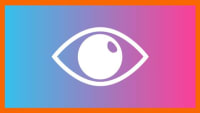Description
This course is all about learning the basics of Molecular Spectroscopy. This course talks about the most important spectroscopy techniques used by chemists in industry-level projects. It starts by explaining the significance of the electromagnetic spectrum and later talks about the origin of transitions which further give rise to the UV and Visualising spectrum. It also describes the other two techniques of Infrared Spectroscopy and Nuclear Magnetic Resonance Spectroscopy. With quizzes at the end of every module and interactive presentations, this course aims to teach real-world experiments.
Topics Covered:
- Electromagnetic Spectrum: Get introduced to the concept of electromagnetic spectrum and the electronic structure of molecules and atoms.
- Concepts: Come across three main concepts of this spectrum, wavelength, intensity of the bands and the colour origin of specific compounds.
- Visible Spectrum: Learn how you can obtain both visible and UV spectra in a laboratory and attempt the quiz to rate your knowledge at the end of this chapter.
- Infrared Spectroscopy: Understand the concept of this spectroscopy and come across a few examples of analysis in the laboratory with the help of this technique.
- Oscillator Model: Gain knowledge of the theory underlying vibration with the help of a simple harmonic oscillator model and take notes.
- NMR Spectra: Come across various examples of the analysis of NMR spectra and see how you can obtain an NMR spectrum in the laboratory.
- And Many More Topics..
Who Will Benefit?
- Students Of Chemistry: Both graduates and undergraduate students of chemistry and biochemistry who want to learn about three different spectroscopy.
- Chemistry Teachers: Professionals who are teaching chemistry in high school or a college and want to have a clear understanding of the concepts.
- Lab Authorities: Individuals who are responsible for laboratory processes and want to learn about molecular structure analysis and examples of spectroscopies.
Why Choose This Course?
As you choose this course, you come across all the important spectroscopy methods which are used by both chemists and biochemists. You will also learn about the structure of molecules and the electronic structure of atoms individually.. With interactive presentations and quizzes at the end of every chapter, this course gives you a detailed understanding of all the key concepts related to spectroscopy. It benefits you by letting you gain skills related to all three spectroscopy methods, Ultraviolet Spectroscopy Infrared Spectroscopy and Nuclear Magnetic Resonance Spectroscopy. By the end of this course, you will learn how to measure and analyse spectra with the help of a virtual spectroscopy laboratory.









